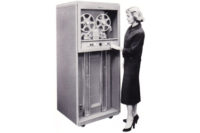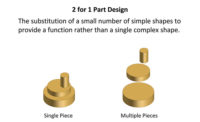Universities usually compete against each other on basketball courts or football fields. But, a couple dozen schools are currently involved in an equally intense competition—a race to revolutionize ground transportation.
The goal is to develop the Hyperloop, an idea first proposed by tech guru Elon Musk four years ago. He envisions a system of pods traveling more than 600 miles per hour in vacuum tubes as the “fifth mode of transportation.”
A network of elevated tubes maintained in a near-vacuum would propel pods filled with people or cargo between major cities. By dramatically reducing air friction, the pods would travel at close to the speed of sound, using low-energy propulsion systems.
The high-speed transport concept would enable people to commute between major cities, such as Los Angeles and San Francisco, in 30 minutes or less.
Several startup companies are currently trying to commercialize the cutting-edge technology. Dubai plans to build the first Hyperloop system by 2020.
And, two of Europe’s biggest railway companies, DB and SNCF, are investing in startup projects, such as Hyperloop One, which has proposed 11 routes in the United States. The consortium has already built a full-scale test track near Las Vegas.
To spur further development, Musk’s Space Exploration Technologies Corp. (SpaceX) created the Hyperloop Pod Competition two years ago. It has sparked the competitive juices of young engineers on college campuses around the world.
According to Musk, who’s also the entrepreneur behind Tesla Inc., the purpose of the competition is to help “accelerate the development of functional prototypes and encourage student innovation by challenging university students to design and build the best high-speed pod.”
Several rounds of the competition have already taken place.
In January 2016, a group of Massachusetts Institute of Technology (MIT) students beat teams from 115 universities and 20 countries to earn the best overall design award. Their victory set them on the road to the next task in the competition: to build a functional pod capable of safely shooting through a tunnel at hundreds of miles per hour.
Teams from more than 25 universities in Australia, Canada, Holland, Germany, Japan and the United States designed, built and tested aerodynamic pods for the second round of the competition, which was held earlier this year. In that event, MIT and other top-notch U.S. engineering schools, such as Carnegie Mellon, Lehigh, Purdue, Virginia Tech and the University of Michigan, were humbled by their European counterparts.
A team of students from Holland’s Delft University of Technology won the event in January. They also received an award for the best construction and design. Their lightweight pod was made from carbon fiber and was 5 meters long. Magnets were used to allow the pod to hover over the test track.
Students from the Technical University of Munich took home the other prize, awarded for the highest average speed. Their pod travelled at 59 mph.
The next round of the competition will take place in late August at SpaceX’s 1-mile, 6-foot diameter Hyperloop test track in Hawthorne, CA. It will focus on maximum speed.
While many of the college teams are comprised of mechanical and electrical engineering students, the competition has also attracted interest from kids majoring in other disciplines, such as business and computer science.
“More important than the result of the competition is what these students are getting out of this experience,” says Gregory Washington, dean of engineering at the University of California-Irvine. “This has been an extraordinary hands-on learning experience for [them].”





